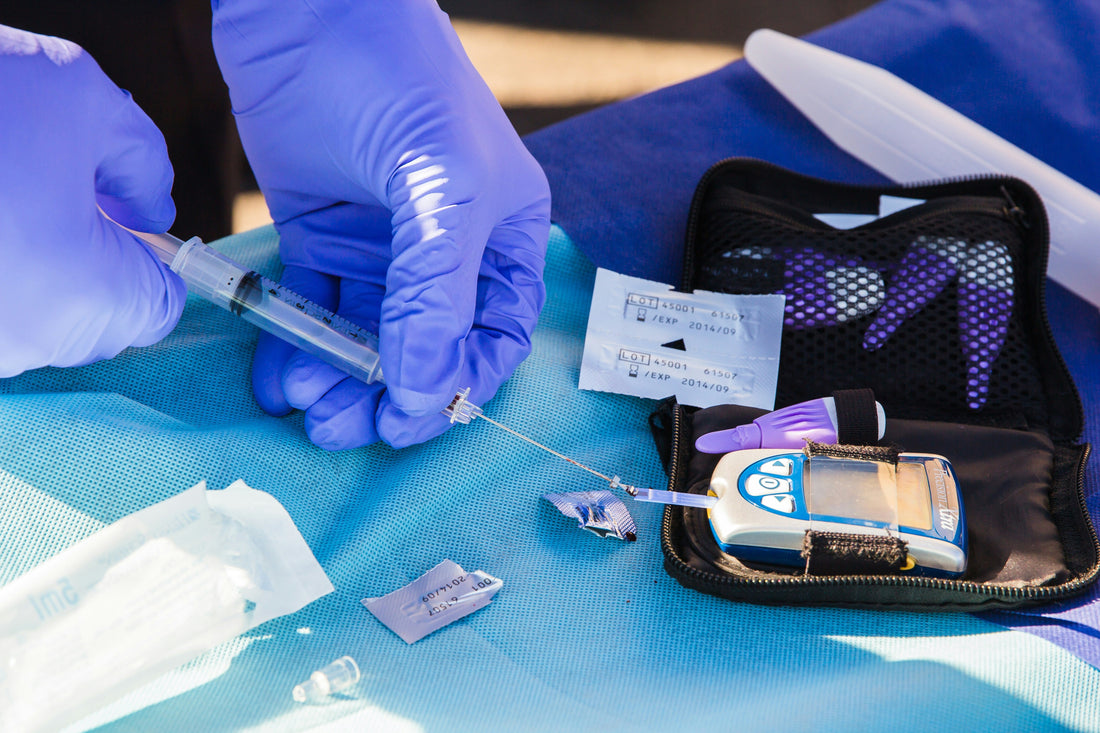
Diabetes and Ingrown Toenails: What You Need to Know
Share
For individuals managing diabetes, foot health is a crucial aspect of overall well-being. Diabetes can lead to complications that make even minor foot issues, such as ingrown toenails, potentially serious. This blog will explore why people with diabetes are more prone to foot problems, the added risks associated with ingrown toenails, and the steps that can be taken to prevent and treat them effectively.
Why Are Diabetics More Susceptible to Ingrown Toenails?
Diabetes can impact the body in several ways that increase the likelihood of developing foot issues, including ingrown toenails. Here’s why:
- Reduced Blood Circulation: Diabetes can impair blood flow to the extremities, which means that any injury or infection in the foot heals more slowly. This reduced healing ability makes a seemingly small issue like an ingrown toenail more prone to complications.
- Nerve Damage (Peripheral Neuropathy): High blood sugar levels can lead to nerve damage, which may reduce sensation in the feet. This makes it difficult for people with diabetes to detect pain or discomfort, causing them to overlook the initial signs of an ingrown toenail.
- Weakened Immune Response: Diabetes can compromise the immune system, making it harder for the body to fight off infections. This increases the risk of an ingrown toenail becoming infected, leading to more severe complications if not treated promptly.
The Dangers of Ingrown Toenails in Diabetics
An ingrown toenail can cause pain and swelling as the edge of the nail grows into the surrounding skin. For people without underlying health conditions, this can be a painful but manageable issue. However, for diabetics, ingrown toenails can lead to serious complications such as:
- Infections: If an ingrown toenail pierces the skin, bacteria can easily enter and cause an infection. In diabetics, these infections can be challenging to treat and may spread more quickly.
- Ulcers: Untreated or infected ingrown toenails can develop into open sores or ulcers, which are difficult to heal and can become a significant medical concern.
- Amputation: In severe cases where an infection is not properly managed, it may lead to gangrene and the potential need for amputation.
Recognizing the Signs of an Ingrown Toenail
It’s important for individuals with diabetes to monitor their feet closely. Early recognition of an ingrown toenail can prevent complications. Key signs to look for include:
- Redness and swelling around the nail
- Pain or tenderness along the side of the toenail
- Fluid drainage or pus, indicating infection
- Warmth in the affected area
Preventing Ingrown Toenails in Diabetics
Prevention is key when it comes to managing foot health in diabetes. Here are some preventive measures:
- Proper Nail Care: Trim nails straight across and avoid cutting them too short. This helps prevent the edges of the nails from growing into the skin.
- Wear Comfortable Footwear: Choose shoes that provide enough space for your toes, reducing the risk of pressure that can cause ingrown toenails.
- Daily Foot Inspections: Check your feet daily for any signs of redness, swelling, or abnormal changes. Using a mirror or asking for assistance can help ensure no areas are missed.
- Keep Feet Clean and Dry: Maintaining good hygiene can reduce the risk of bacterial or fungal infections.
- Regular Podiatrist Visits: Routine check-ups with a podiatrist can help identify and manage potential foot issues before they become problematic.
Treating Ingrown Toenails Safely
If you suspect an ingrown toenail, early intervention is crucial:
- Cold Water Soaks: Soaking the foot in cold, soapy water can help reduce swelling and relieve discomfort.
- Avoid DIY Surgery: Never attempt to cut or dig out an ingrown toenail yourself, as this can worsen the issue or lead to infection.
- Seek Professional Care: Contact a healthcare provider or podiatrist for safe and appropriate treatment. They may recommend antibiotics if an infection is present or perform a minor procedure to remove the ingrown part of the nail.
For people with diabetes, managing foot health is essential to prevent complications that could impact their quality of life. Ingrown toenails, though seemingly minor, can lead to serious health issues if not addressed promptly. Practicing proper nail care, wearing suitable footwear, and regularly checking your feet are important steps for prevention. If you do notice symptoms of an ingrown toenail, seek medical assistance to ensure it is treated safely and effectively.
